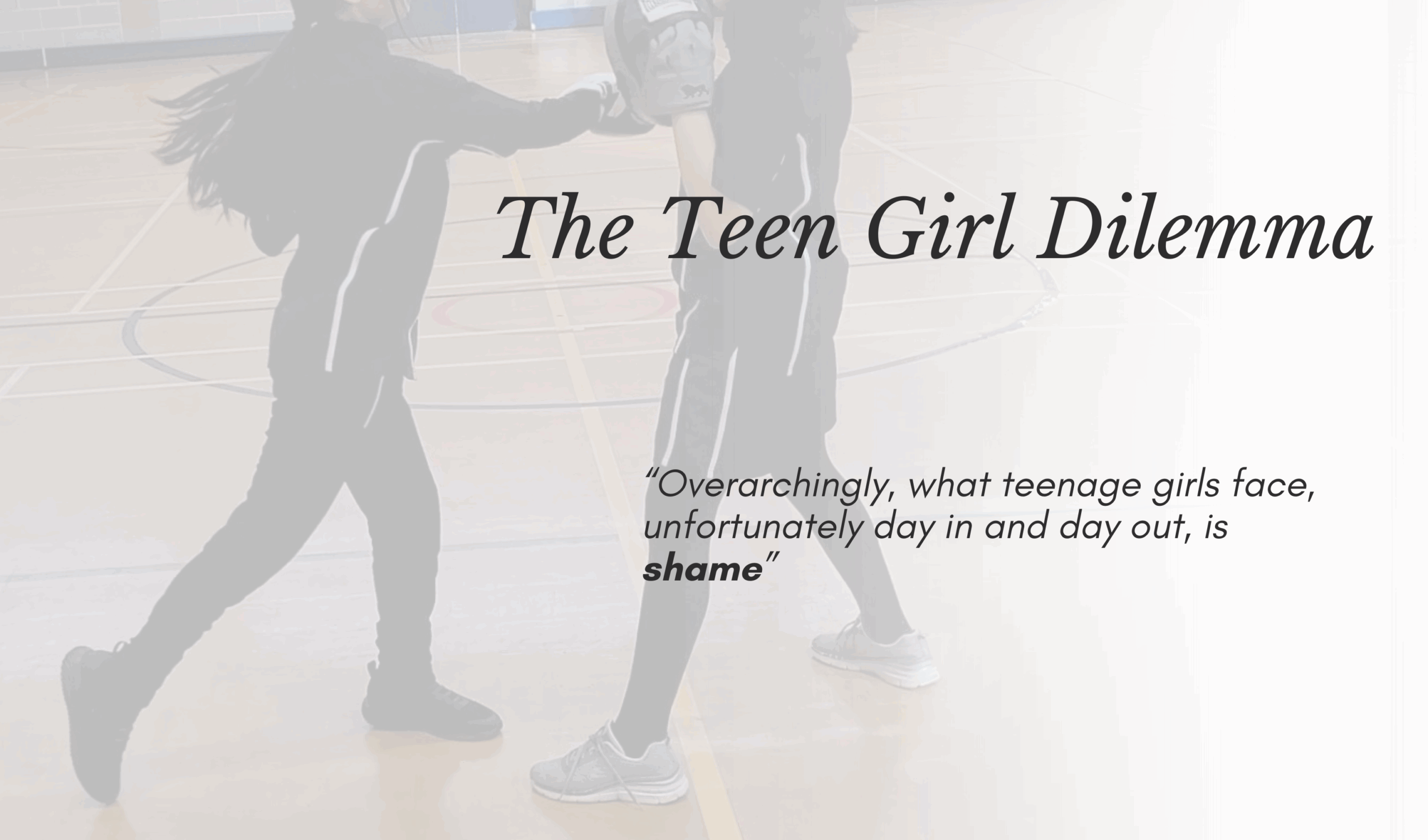Over the years, I’ve taught all sorts – kids, kids with special educational needs, adults, even taught adults as a kid myself. Each group presented its own challenges, some are shy, embarrassed even, some kids are naughty and disruptive, some older people stiff and inflexible. Ultimately, all anyone needed was patience and a certain level of adaptability from their teacher. But, by FAR, the most difficult demographic I’ve taught has to be, arguably, the ones who need it the most: teenage girls.
An intimidating group, not for novices. They are often reluctant, judgy and band together to make you feel silly for even trying. And as a former teenage girl myself…fair enough.
To be a teenage girl is to be bombarded by the world, battered from all sides with opinions, think-pieces, complex friendships and, now, TikTok videos a mile a minute. Not to mention the looming threat that makes you at least wonder if, on your walk home from your friends house, or from school, you are making yourself a walking target.
Unfortunately, teenage girls are most likely to experience harassment, coercion and physical intimidation. I often struggle knowing that this has nothing to do with them. They are not the perpetrators and they are not the reason that so many of them sadly experience some version of this in their lives whether in small or larger, far more traumatising, ways. I think it’s an uncomfortable thought that to be a teenage girl, is to be traumatised, however small. So, I have concluded that teen girls are the ones who benefit the most from the teachings of self-defence.
There are reasons, other than the ones I have outlined already that dissuade girls from self-defence.
- Embarrassment is a powerful barrier – self-consciousness, looking silly or weird, or doing it wrong amongst peers
- Discomfort with aggression – girls are often discouraged from showing anger, asked to ignore their emotions to just ‘be cool.’ So when asked to tap into something resembling aggression, it may feel unnatural or uncomfortable
- Sports stigma and social pressure – often, girls are not encouraged to take part in sports, neither team sports or individual. I remember that the general consensus is that P.E. is something that we were FORCED to do. It was uncool and embarrassing. Even if I did secretly enjoy sports, the done thing was to comply with social dictation that I really hated it and so would put in the least amount of effort required.
Overarchingly, what teenage girls face, unfortunately day in and day out, is shame. The apathetic attitude is merely a mask.
There have been a few classes I’ve taught were I see blatant disinterest on the girls’ faces, with shoulders slumped and eyes unfocussed. To start with, sluggish movements, hips popped as though waiting for me to prove myself. I know what to leave out of these initial classes – to fast too soon and I’ll lose them completely.
Eventually I see that they have warmed up to the idea that not only might the class be helpful, but also, maybe(!), fun. A twinkle of curiosity in their eyes tells me I’m on the right track. It’s happened enough times that I feel that I have found the formula. Set expectations very low – and eventually, by the end of the hour, those suspicious faces armed with excuses and apathy became far more open, some strictly concentrated, some smiling with the satisfaction of knowing capability.
I tell the girls that all I want from them is to leave having learned something new. Plus, I try to sneak in a little newfound confidence. What I want them to know is that not only do they need classes like this, they deserve it.

